
Keywords: IIT

|
Millions of Mosquitoes Will Rain Down on Hawaii to Save an Iconic BirdS. Wild, Scientific American, 2023.
Millions of mosquitoes dropped from helicopters could be the greatest hope for Hawaii’s iconic honeycreepers. At least four species of the brightly colored birds could go extinct within the year if no action is taken to save them. “We’re seriously in a race against time at ... Keywords: cockroach, IIT, Incompatibility Insect Technique, wolbachia |

|
Molecular Evidence of Wolbachia Species in Wild-Caught Aedes albopictus and Aedes aegypti Mosquitoes in Four States of Northeast IndiaVinayagam, S. Nirmolia, T. Chetry, S. Kumar, N. P. Saini, P. Bhattacharyya, D. R. Bhowmick, I. P. Sattu, K. Patgiri, S. J., Journal of Tropical Medicine, 2023.
Wolbachia, a Gram-negative intracellular bacterium, naturally infects many arthropods, including mosquito vectors responsible for the spread of arboviral diseases such as Zika, chikungunya, and dengue fever. Certain Wolbachia strains are involved in inhibiting arbovirus ... Keywords: cockroach, IIT, Incompatibility Insect Technique, wolbachia |

|
First Detection and Genetic Identification of Wolbachia Endosymbiont in Field-Caught Aedes aegypti (Diptera: Culicidae) Mosquitoes Collected from Southern TaiwanL.-L. Chao and C.-M. Shih, Microorganisms, 11. 2023.
The prevalence and genetic character of Wolbachia endosymbionts in field-collected Aedes aegypti mosquitoes were examined for the first time in Taiwan. A total of 665 Ae. aegypti were screened for Wolbachia infection using a PCR assay targeting the Wolbachia surface protein (wsp) ... Keywords: cockroach, IIT, Incompatibility Insect Technique, wolbachia |

|
Modeling the Impact of Migration on Mosquito Population SuppressionM. Huang and J. Yu, Qualitative Theory of Dynamical Systems, 22:134. 2023.
The Wolbachia-induced incompatible insect technique is a promising strategy for controlling wild mosquito populations. However, recent experimental studies have shown that mosquito migration into target areas dilutes the strategy’s effectiveness. In this work, we formulate a ... Keywords: cockroach, IIT, Incompatibility Insect Technique, wolbachia |
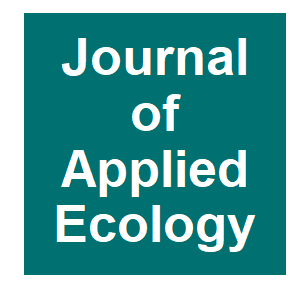
|
Estimating mosquito abundance and population suppression in an incompatible insect technique studyL. Griffin, D. Pagendam, C. Drovandi, B. Trewin and N. W. Beebe, Journal of Applied Ecology, 2023.
Our model can provide valuable insights that can shape decision support systems in sterile insect technique and incompatible insect technique programmes operating over large geographical scales. The model helps determine how many sterile/incompatible insects should be released ... Keywords: cockroach, IIT, Incompatibility Insect Technique, wolbachia |

|
Draft environmental assessment released for using modified mosquitoes to save native birds on KauaʻiAnonymous, Big Island NOW, 2023.
Today, the draft environmental assessment was made public for the use of Wolbachia-based incompatible male mosquitoes on Kauaʻi to stop the spread of avian malaria that is decimating native forest bird populations. The public has 31 days — from June 23 until July 24 — to ... Keywords: cockroach, IIT, Incompatibility Insect Technique, wolbachia |

|
Draft environmental assessment for use of Wolbachia-based incompatible insect technique for the suppression of nonnative southern house mosquito populations on KauaʻiHawai'i Department of Land and Natural Resources, Hawai'i Department of Land and Natural Resources, 2023.
The State of Hawai'i Department of Land and Natural Resources hereby transmits the Draft Environmental Assessment and Anticipated Finding of No Significant Impact (DEAEnvironmental Assessment for use of Wolbachia-based Incompatible Insect Technique for the suppression of ... Keywords: cockroach, IIT, Incompatibility Insect Technique, wolbachia |
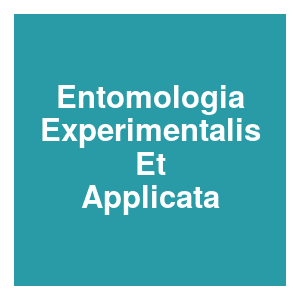
|
Molecular detection of reproductive symbionts and parthenogenesis experiments in Tuta absoluta from Argentina: facing potential for sustainable and specific pest control strategiesC. Cagnotti, C. Conte, J. Kramar, S. Lanzavecchia and S. López, Entomologia Experimentalis et Applicata, 2023.
Tomato leafminer, Tuta absoluta (Meyrick) (Lepidoptera: Gelechiidae), is a key pest of tomato crops. Specific and environmentally friendly control strategies against this pest, such as the sterile insect technique (SIT), are under development and sexual reproduction has emerged ... Keywords: cockroach, IIT, Incompatibility Insect Technique, wolbachia |
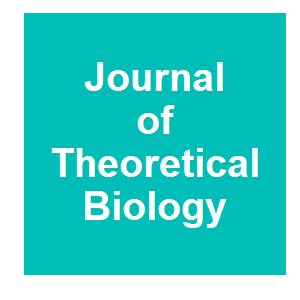
|
The optimal strategy of incompatible insect technique (IIT) using Wolbachia and the application to malaria controlT. Matsufuji and S. Seirin-Lee, Journal of Theoretical Biology, 569:111519. 2023.
For decades, techniques to control vector population with low environmental impact have been widely explored in both field and theoretical studies. The incompatible insect technique (IIT) using Wolbachia, based on cytoplasmic incompatibility, is a technique that ... Keywords: cockroach, IIT, Incompatibility Insect Technique, wolbachia |
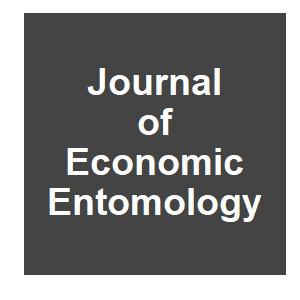
|
The prevalence of Wolbachia in multiple cockroach species and its implication for urban insect managementS. O. Oladipupo, Y. Laidoudi, J. F. Beckmann, X. P. Hu and A. G. Appel, Journal of Economic Entomology, 2023.
Cockroach management relies heavily on the use of conventional insecticides in urban settings, which no longer provide the anticipated level of control. Knowledge of cockroach endosymbionts, like Wolbachia, might provide novel avenues for control. Therefore, we screened 16 ... Keywords: cockroach, IIT, Incompatibility Insect Technique, wolbachia |

|
CRISPR-based gene editing of non-homologous end joining factors biases DNA repair pathway choice toward single-strand annealing in Aedes aegyptiK. Chae, J. M. Overcash, C. Dawson, C. Valentin, H. Tsujimoto, K. M. Myles and Z. N. Adelman, Current Research in Biotechnology, 5:100133. 2023.
To maintain genome stability, eukaryotic cells orchestrate DNA repair pathways to process DNA double-strand breaks (DSBs) that result from diverse developmental or environmental stimuli. Bias in the selection of DSB repair pathways, either non-homologous end joining (NHEJ) or ... Keywords: cockroach, IIT, Incompatibility Insect Technique, wolbachia |
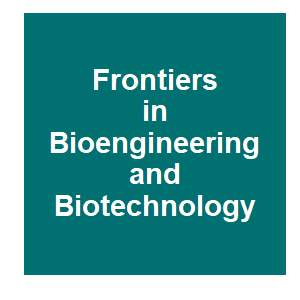
|
Editorial: Genetic control of insect pest species—achievements, challenges, and perspectivesI. Häcker, D. Bartsch, A. Choo and F. Marec, Frontiers in Bioengineering and Biotechnology, 11. 2023.
Genetic control is a type ofbiological control and a promising approach to regulate insect pest populations in a species-specific manner. It is based on targeting the reproductive capacity of the target pest species to reduce population size to non-critical levels. The best known ... Keywords: cockroach, IIT, Incompatibility Insect Technique, wolbachia |
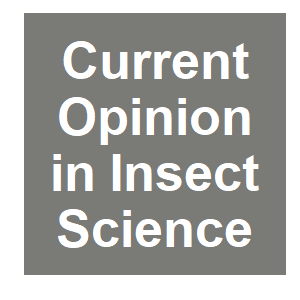
|
Wolbachia-based strategies for control of agricultural pestsJ. T. Gong, T. P. Li, M. K. Wang and X. Y. Hong, Curr Opin Insect Sci, 101039:10.1016/j.cois.2023.101039. 2023.Wolbachia-based incompatible insect technique (IIT) and pathogen blocking technique (PBT) have been shown to be effective at protecting humans from mosquito-borne diseases in the past decades. Population suppression based on IIT and population replacement based on PBT have become ... Keywords: cockroach, IIT, Incompatibility Insect Technique, wolbachia |

|
The Role of Symbiont-Targeted Strategies in the Management of Pentatomidae and Tephritidae Pests under an Integrated VisionE. Gonella and A. Alma, Agronomy, 13. 2023.
The interaction between insects and gut bacterial symbionts is, nowadays, regarded as an important element in the implementation of pest management, in consideration of the urgent need for sustainable alternatives to insecticide use. In this framework, a major tool is symbiotic ... Keywords: cockroach, IIT, Incompatibility Insect Technique, wolbachia |
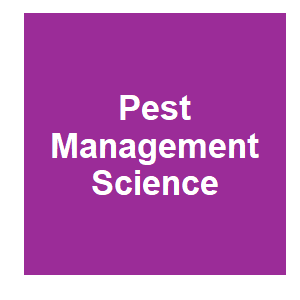
|
A bacterium against the tiger: further evidence of the potential of non-inundative releases of males with manipulated Wolbachia infection in reducing fertility of Aedes albopictus field populations in ItalyB. Caputo, R. Moretti, C. Virgillito, M. Manica, E. Lampazzi, G. Lombardi, P. Serini, V. Pichler, N. W. Beebe, A. Della Torre and M. Calvitti, Pest Management Science, 2023.
BACKGROUND: Incompatible Insect Technique (IIT) is a population suppression approach based on the release of males with manipulated Wolbachia infection inducing egg inviability in wild females. We here present results of multiple field releases of incompatible ARwP males carried ... Keywords: cockroach, IIT, Incompatibility Insect Technique, wolbachia |

|
First report of natural Wolbachia infections in mosquitoes from CubaA. Ruiz, G. Gutiérrez-Bugallo, R. Rodríguez-Roche, L. Pérez, R. González-Broche, L. A. Piedra, L. C. Martínez, Z. Menéndez, A. Vega-Rúa and J. A. Bisset, Acta Tropica, 242:106891. 2023.
Mosquitoes are extensively responsible for the transmission of pathogens. Novel strategies using Wolbachia could transform that scenario, since these bacteria manipulate mosquito reproduction, and can confer a pathogen transmission-blocking phenotype in culicids. Here, we ... Keywords: cockroach, IIT, Incompatibility Insect Technique, wolbachia |

|
Wolbachia pipientis infections in populations of Aedes albopictus in the city of València (Spain): implications for mosquito controlR. Bueno-Marí, R. Domínguez-Santos, M. Trelis, E. Garrote-Sánchez, M. Cholvi, F. Quero de Lera, M. Khoubbane, A. Marcilla and R. Gi, Revista Española de Salud Pública, 97. 2023.
OBJECTIVE: The presence of Aedes albopictus, of high sanitary and social impact, was first reported in Valencia (Eastern Spain) in 2015. Innovative tools for its control include the use of the endosymbiotic bacterium Wolbachia pipientis. The release of mosquito males infected ... Keywords: cockroach, IIT, Incompatibility Insect Technique, wolbachia |

|
Satellite Rearing of Aedes Mosquito Eggs: Synchronized Empirical Test of a Novel Mass Rearing ModelK. L. Dobson, K. Blore, J. A. Henke, K. Y. Hung, T. Morgan, T. Posey, S. Sun, O. Sypes, N. P. Tremblay and S. L. Dobson, J Am Mosq Control Assoc, 39:12-17. 2023.
Mosquito suppression strategies based on "rear and release" of male mosquitoes are attracting renewed interest from governments, municipalities, and private businesses. These include irradiation-based sterile insect technique, Wolbachia-based technologies, and genetic ... Keywords: cockroach, IIT, Incompatibility Insect Technique, wolbachia |
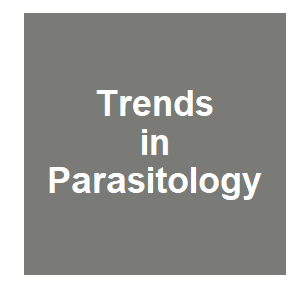
|
When less is more: accounting for overcompensation in mosquito SIT projectsJ. Bouyer, Trends in Parasitology, 2023.
Compensation and overcompensation under field conditions are confirmed in Aedes mosquitoes recently by Evans et al.: equal or increased densities of emerging adults may thus result from reduced larval densities. Here the consequences when applying the sterile insect technique and ... Keywords: cockroach, IIT, Incompatibility Insect Technique, wolbachia |
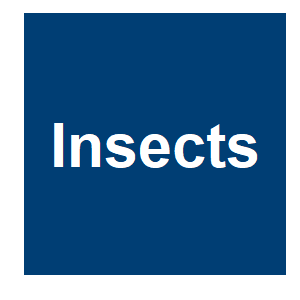
|
Joint FAO/IAEA Coordinated Research Project on Mosquito Handling, Transport, Release and Male Trapping Methods in Support of SIT Application to Control MosquitoesM. Gómez, B. J. Johnson, H. C. Bossin and R. Argilés-Herrero, Insects, 14. 2023.
The research carried out in the framework of this CRP generated key achievements in areas relevant to the SIT application to control mosquitoes. Among these outcomes, particular mentions must be given to the following: (1) Novel and efficient self-marking techniques were ... Keywords: cockroach, IIT, Incompatibility Insect Technique, wolbachia |

|
Survival-Larval Density Relationships in the Field and Their Implications for Control of Container-Dwelling Aedes MosquitoesK. G. Evans, Z. R. Neale, B. Holly, C. C. Canizela and S. A. Juliano, Insects, 14. 2022.
Population density can affect survival, growth, development time, and adult size and fecundity, which are collectively known as density-dependent effects. Container Aedes larvae often attain high densities in nature, and those densities may be reduced when larval control is ... Keywords: cockroach, IIT, Incompatibility Insect Technique, wolbachia |

|
Assessing the efficacy of male Wolbachia-infected mosquito deployments to reduce dengue incidence in Singapore: study protocol for a cluster-randomized controlled trialJ. Ong, S. H. Ho, S. X. H. Soh, Y. Wong, Y. Ng, K. Vasquez, Y. L. Lai, Y. X. Setoh, C. S. Chong, V. Lee, J. C. C. Wong, C. H. Tan, S. Sim, L. C. Ng and J. T. Lim, Trials, 23:1023. 2022.
The study is designed as a parallel, two-arm, non-blinded cluster-randomized (CR) controlled trial to be conducted in high-rise public housing estates in Singapore, an equatorial city-state. The aim is to determine whether large-scale deployment of male Wolbachia-infected Ae. ... Keywords: cockroach, IIT, Incompatibility Insect Technique, wolbachia |

|
East Maui project hopes mosquito v. mosquito mating battle will save endangered birdsK. Cerizo, MAUINOW, 2022.
Keywords: cockroach, IIT, Incompatibility Insect Technique, wolbachia |
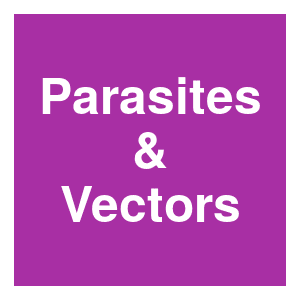
|
A mass rearing cost calculator for the control of Culex quinquefasciatus in Hawaiʻi using the incompatible insect techniqueA. E. Vorsino and Z. Xi, Parasites and Vectors, 15:453. 2022.
Hawaiʻi’s native forest avifauna is experiencing drastic declines due to climate change-induced increases in temperature encroaching on their upper-elevation montane rainforest refugia. Higher temperatures support greater avian malaria infection rates due to greater densities ... Keywords: cockroach, IIT, Incompatibility Insect Technique, wolbachia |

|
Effect of Wolbachia Infection and Adult Food on the Sexual Signaling of Males of the Mediterranean Fruit Fly Ceratitis capitataG. A. Kyritsis, P. Koskinioti, K. Bourtzis and N. T. Papadopoulos, Insects, 13. 2022.
Sexual signaling is a fundamental component of sexual behavior of Ceratitis capitata that highly determines males' mating success. Nutritional status and age are dominant factors known to affect males' signaling performance and define the female decision to accept a male as a ... Keywords: cockroach, IIT, Incompatibility Insect Technique, wolbachia |

|
Studies on the fitness characteristics of wMel- and wAlbB-introgressed Aedes aegypti (Pud) lines in comparison with wMel- and wAlbB-transinfected Aedes aegypti (Aus) and wild-type Aedes aegypti (Pud) linesC. Sadanandane, K. Gunasekaran, D. Panneer, S. K. Subbarao, M. Rahi, B. Vijayakumar, V. Athithan, A. Sakthivel, S. Dinesh and P. Jambulingam, Frontiers in Microbiology, 13:947857. 2022.
Wolbachia, an intracellular maternally transmitted endosymbiont, has been shown to interfere with the replication of dengue virus in Aedes aegypti mosquitoes. The Wolbachia-transinfected Ae. aegypti has been currently released in many countries to test its effectiveness in ... Keywords: cockroach, IIT, Incompatibility Insect Technique, wolbachia |
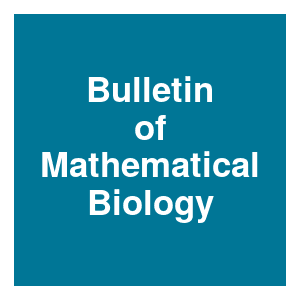
|
Wolbachia Dynamics in Mosquitoes with Incomplete CI and Imperfect Maternal Transmission by a DDE SystemY. Su, B. Zheng and X. Zou, Bulletin of Mathematical Biology, 84:95. 2022.
In this paper, we propose a delay differential equation model to describe the Wolbachia infection dynamics in mosquitoes in which the key factor of cytoplasmic incompactibility (CI) is incorporated in a more natural way than those in the literature. By analyzing the dynamics of ... Keywords: cockroach, IIT, Incompatibility Insect Technique, wolbachia |

|
Sensitivity of wMel and wAlbB Wolbachia infections in Aedes aegypti Puducherry (Indian) strains to heat stress during larval developmentK. Gunasekaran, C. Sadanandane, D. Panneer, A. Kumar, M. Rahi, S. Dinesh, B. Vijayakumar, M. Krishnaraja, S. K. Subbarao and P. Jambulingam, Parasites and Vectors, 15:221. 2022.
BACKGROUND: ICMR-Vector Control Research Centre, Puducherry, India, developed two colonies of Aedes aegypti infected with wMel and wAlbB Wolbacia strains called Ae. aegypti (Pud) lines for dengue control. The sensitivity of wMel and wAlbB strains in Ae. aegypti (Pud) lines to ... Keywords: cockroach, IIT, Incompatibility Insect Technique, wolbachia |

|
Wolbachia interacts with the microbiome to shape fitness-associated traits during seasonal adaptation in Drosophila melanogasterL. P. Henry, M. Fernandez, S. Wolf and J. Ayroles, bioRxiv, 2022.05.31.494239. 2022.
The microbiome contributes to many different host traits, but its role in host adaptation remains enigmatic. The fitness benefits of the microbiome often depend on ecological conditions, but fluctuations in both the microbiome and environment modulate these fitness benefits. ... Keywords: cockroach, IIT, Incompatibility Insect Technique, wolbachia |

|
Reply to: Assessing the efficiency of Verily’s automated process for production and release of male Wolbachia-infected mosquitoesJ. E. Crawford, K. C. Hopkins, A. Buchman, T. Zha, P. Howell, E. Kakani, J. R. Ohm, N. Snoad, L. Upson, J. Holeman, P. Massaro, S. L. Dobson, F. S. Mulligan and B. J. White, Nature Biotechnology, 2022.
We appreciate the comments from Bouyer et al. under their mandate as a United Nations agency program (‘to promote the safe and appropriate use of nuclear techniques and related technologies in food and agriculture’) on our paper1 . The centuries-old fight against ... Keywords: cockroach, IIT, Incompatibility Insect Technique, wolbachia |

|
Assessing the efficiency of Verily’s automated process for production and release of male Wolbachia-infected mosquitoesJ. Bouyer, H. Maiga and M. J. B. Vreysen, Nature Biotechnology, 2022.
A paper by Crawford et al.1 titled ‘Efficient production of male Wolbachia-infected Aedes aegypti mosquitoes enables large-scale suppression of wild populations’ reports a mosquito control suppression trial carried out from2017 to 2018 in Fresco Country, California, USA1 . ... Keywords: cockroach, IIT, Incompatibility Insect Technique, wolbachia |

|
Strategies to Mitigate Establishment under the Wolbachia Incompatible Insect TechniqueS. Soh, S. H. Ho, J. Ong, A. Seah, B. S. Dickens, K. W. Tan, J. R. Koo, A. R. Cook, S. Sim, C. H. Tan, L. C. Ng and J. T. Lim, Viruses, 14. 2022.
The Incompatible Insect Technique (IIT) strategy involves the release of male mosquitoes infected with the bacterium Wolbachia. Regular releases of male Wolbachia-infected mosquitoes can lead to the suppression of mosquito populations, thereby reducing the risk of transmission of ... Keywords: cockroach, IIT, Incompatibility Insect Technique, wolbachia |
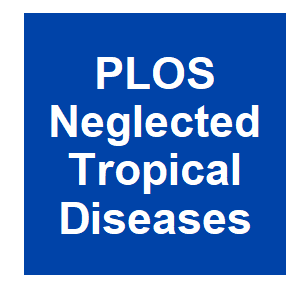
|
Pilot trial using mass field-releases of sterile males produced with the incompatible and sterile insect techniques as part of integrated Aedes aegypti control in MexicoA. Martín-Park, A. Che-Mendoza, Y. Contreras-Perera, S. Pérez-Carrillo, H. Puerta-Guardo, J. Villegas-Chim, G. Guillermo-May, A. Medina-Barreiro, H. Delfín-González, R. Méndez-Vales, S. Vázquez-Narvaez, J. Palacio-Vargas, F. Correa-Morales, G. Ayora-Tal, PLoS Negl Trop Dis, 16:e0010324. 2022.
We implemented a controlled before-and-after quasi-experimental study in two suburban localities of Yucatan (Mexico): San Pedro Chimay (SPC), which received IIT-SIT, and San Antonio Tahdzibichén used as control. Release of wAlbB Ae. aegypti males at SPC extended for 6 months ... Keywords: cockroach, IIT, Incompatibility Insect Technique, wolbachia |

|
Could species-focused suppression of Aedes aegypti, the yellow fever mosquito, and Aedes albopictus, the tiger mosquito, affect interacting predators? An evidence synthesis from the literatureJ. A. S. Bonds, C. M. Collins and L.-C. Gouagna, Pest Management Science, 2022.
The risks of Aedes aegypti and Aedes albopictus nuisance and vector-borne diseases are rising and the adverse effects of broad-spectrum insecticide application has promoted species-specific techniques, such as sterile insect technique (SIT) and other genetic strategies, as ... Keywords: cockroach, IIT, Incompatibility Insect Technique, wolbachia |

|
Increased biting rate and decreased Wolbachia density in irradiated Aedes mosquitoesR. Moretti, E. Lampazzi, C. Damiani, G. Fabbri, G. Lombardi, C. Pioli, A. Desiderio, A. Serrao and M. Calvitti, Parasites and Vectors, 15:67. 2022.
Releasing considerable numbers of radiation-sterilized males is a promising strategy to suppress mosquito vectors. However, releases may also include small percentages of biting females, which translate to non-negligible numbers when releases are large. Currently, the effects of ... Keywords: cockroach, IIT, Incompatibility Insect Technique, wolbachia |
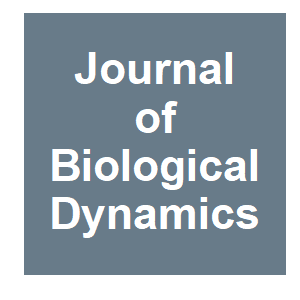
|
Uniqueness and stability of periodic solutions for an interactive wild and Wolbachia-infected male mosquito modelR. Yan and Q. Sun, Journal of Biological Dynamics, 2022.
We investigate a mosquito population suppression model, which includes the release of Wolbachia-infected males causing incomplete cytoplasmic incompatibility (CI). The model consists of two sub-equations by considering the density-dependent birth rate of wild mosquitoes. By ... Keywords: cockroach, IIT, Incompatibility Insect Technique, wolbachia |

|
Genetically engineered insects with sex-selection and genetic incompatibility enable population suppressionA. Upadhyay, N. R. Feltman, A. Sychla, A. Janzen, S. R. Das, M. Maselko and M. Smanski, eLife, 11. 2022.
Engineered Genetic Incompatibility (EGI) is a method to create species-like barriers to sexual reproduction. It has applications in pest control that mimic Sterile Insect Technique when only EGI males are released. This can be facilitated by introducing conditional ... Keywords: cockroach, IIT, Incompatibility Insect Technique, wolbachia |

|
Recently introduced Wolbachia reduces bacterial species richness and reshapes bacterial community structure in Nilaparvata lugensT.-P. Li, C.-Y. Zhou, J.-T. Gong, Z. Xi and X.-Y. Hong, Pest Management Science, 2022.
BACKGROUND Wolbachia has been developed as an effective tool to suppress insect pests and arbovirus transmission. Recently, the brown planthopper Nilaparvata lugens, a serious agricultural pest, has been successfully transinfected with Wolbachia strain wStri from Laodelphax ... Keywords: cockroach, IIT, Incompatibility Insect Technique, wolbachia |

|
Lab-scale characterization and semi-field trials of Wolbachia Strain wAlbB in a Taiwan Wolbachia introgressed Ae. aegypti strainW. L. Liu, H. Y. Yu, Y. X. Chen, B. Y. Chen, S. N. Leaw, C. H. Lin, M. P. Su, L. S. Tsai, Y. Chen, S. H. Shiao, Z. Y. Xi, A. C. C. Jang and C. H. Chen, PLOS Neglected Tropical Diseases, 16:24. 2022.
Author summaryPrior to open field release, new genetic approaches that interfere with mosquito abilities and reduce mosquito population density require progressive evaluation both in the laboratory and contained field trials. Trials in contained outdoor systems are thus an ... Keywords: cockroach, IIT, Incompatibility Insect Technique, wolbachia |

|
Intervention of Modern Genetic Tools for Managing Insect Pests of Fruit CropsG. S. Miglani, S. Singh, Z. Li and R. K. Sandhu, Genetic Methods and Tools for Managing Crop Pests, 2022.
Merits and demerits of select modern genetic tools as sterile insect technique, repressible dominant lethal, engineering insect pests, transgenic crops, primary resistance management, gene silencing RNA interference, genome-editing-based methods, autocidal insect control ... Keywords: cockroach, IIT, Incompatibility Insect Technique, wolbachia |

|
Perspectives into Genetic Manipulations for Control of Dengue Vector (Aedes aegypti Linnaeus, 1762) with Reference to Progress in Indian ExperimentsR. Chatterjee, S. Bhattacharya and B. K. Tyagi, Genetically Modified and other Innovative Vector Control Technologies, 2021.
Vector-borne diseases like malaria, dengue, chikungunya, Japanese encephalitis, Zika and others claim millions of lives across the globe annually, and as such their control has become an ardent necessity. Past attempts over the decades have introduced vector control through ... Keywords: cockroach, IIT, Incompatibility Insect Technique, wolbachia |

|
Wolbachia Endosymbiont and Mosquito Vectors, with Emphasis on Lymphatic Filariasis EliminationI. P. Sunish, Genetically Modified and other Innovative Vector Control Technologies, 2021.
Wolbachia are maternally inherited intracellular bacteria, known to alter early development and mitotic processes in their hosts. They are frequently observed as a reproductive parasite, capable of inducing feminization, parthenogenesis, male killing, or cytoplasmic ... Keywords: cockroach, IIT, Incompatibility Insect Technique, wolbachia |

|
Field Trials of Gene Drive Mosquitoes: Lessons from Releases of Genetically Sterile Males and Wolbachia-infected MosquitoesJ. M. Marshall and V. N. Vásquez, Genetically Modified and other Innovative Vector Control Technologies, 2021.
The discovery of CRISPR-based gene editing and its application to homing-based gene drive has been greeted with excitement, for its potential to control mosquito-borne diseases on a wide scale, and concern, for the invasiveness and potential irreversibility of a release. At the ... Keywords: cockroach, IIT, Incompatibility Insect Technique, wolbachia |

|
Arthropods of Medical Importance: Need for Genetic and Other Innovative Vector Control Technologies, with Emphasis on Eco-biosocial and Environmental Considerations.B. K. Tyagi, Genetically Modified and other Innovative Vector Control Technologies, 2021.
Among the world’s known vector groups, viz. arthropods, snails and rodents, the most important vectors originate from arthropods, the jointed legs. Arthropods are doubtlessly regarded as the most dominant creatures on the Earth due largely to their remarkable structural and ... Keywords: cockroach, IIT, Incompatibility Insect Technique, wolbachia |

|
The Effects of Boric Acid Sugar Bait on Wolbachia Trans-Infected Male Aedes albopictus (ZAP Males®) in Laboratory ConditionsV. S. Aryaprema, W. A. Qualls, K. L. Dobson, S. L. Dobson and R.-D. Xue, Insects, 13. 2021.
The field release of Wolbachia trans-infected male mosquitoes, as well as the use of toxic sugar baits, is a novel and promising candidate technique for integrated mosquito management programs. However, the methods of action of the two techniques may not be complementary, because ... Keywords: cockroach, IIT, Incompatibility Insect Technique, wolbachia |

|
Genetically Modified and other Innovative Vector Control TechnologiesB. K. Tyagi, SpringerLink, 2021.
This book comprehensively covers the latest development in developing and deploying the genetically modified vectors, particularly Anopheles and Aedes mosquitoes responsible for transmitting malaria parasites and dengue viruses, the most deadly and/or debilitating among all the ... Keywords: cockroach, IIT, Incompatibility Insect Technique, wolbachia |
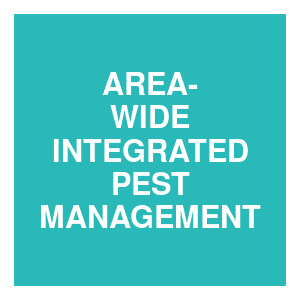
|
New molecular genetic techniques: regulatory and societal considerationsNielsen, K. M., AREA-WIDE INTEGRATED PEST MANAGEMENT: Development and Field Application, 2021.
A rapidly expanding toolbox of techniques available for genome editing provides the basis for a new continuum in types of modifications that can be introduced into a genome and blur the bimodal GMO vs. non-GMO (genetically modified organism) divide. Site-directed nucleases (SDN) ... Keywords: cockroach, IIT, Incompatibility Insect Technique, wolbachia |

|
AREA-WIDE INTEGRATED PEST MANAGEMENT: Development and Field ApplicationHendrichs, J. Pereira, R., Vreysen, M. J. B., AREA-WIDE INTEGRATED PEST MANAGEMENT: Development and Field Application, 2021.
The concept of area-wide integrated pest management (AW-IPM), in which the total population of a pest in an area is targeted, is central to the effective control of such populations through the integration of genetic, biological and other pest suppression technologies. Insect ... Keywords: cockroach, IIT, Incompatibility Insect Technique, wolbachia |

|
Combined sterile insect technique and incompatible insect technique: concept, study design, experience and lessons learned from a pilot suppression trial in ThailandKittayapong, P., AREA-WIDE INTEGRATED PEST MANAGEMENT: Development and Field Application, 2021.
Climate change, rapid global transport and land use change leading to urbanization and agricultural intensification have facilitated disease emergence in vulnerable regions like Southeast Asia, and also the global expansion of vectors and vector-borne diseases into other regions ... Keywords: cockroach, IIT, Incompatibility Insect Technique, wolbachia |

|
Barriers and facilitators of area-wide management including sterile insect technique application: The example of Queensland fruit flyMankad, A., Loechel, B., and Measham, P. F., AREA-WIDE INTEGRATED PEST MANAGEMENT: Development and Field Application, 2021.
The area-wide management (AWM) of highly mobile insect pests such as tephritid fruit flies requires an integrated understanding of technical, social and institutional processes that drive a coordinated approach within a defined area. Furthermore, the success of an AWM programme ... Keywords: cockroach, IIT, Incompatibility Insect Technique, wolbachia |

|
Ecology, behaviour and area-wide control of the floodwater mosquito Aedes sticticus, with potential of future integration of the sterile insect techniqueLundstrom, J. O. Schafer, M. L. Kittayapong, P., AREA-WIDE INTEGRATED PEST MANAGEMENT: Development and Field Application, 2021.
The strategy of aerial control of the floodwater mosquito Aedes sticticus (Meigen) in the floodplains of River Dalalven, central Sweden, was developed to directly address specific larval breeding areas in temporary flooded wet meadows and swamps. Using the Bti-based larvicide ... Keywords: cockroach, IIT, Incompatibility Insect Technique, wolbachia |

|
Trial suppresses mosquitoes using non-GMO approachGM Watch, GM Watch, 2021.
In a first for the Southern Hemisphere, researchers have shown that a bacterium can successfully suppress populations of the invasive, disease-carrying Aedes aegypti mosquito that is responsible for spreading dengue, yellow fever and Zika. Published in PNAS (see abstract below), ... Keywords: cockroach, IIT, Incompatibility Insect Technique, wolbachia |

|
Invasive, disease-carrying Aedes aegypti mosquito sterilized with bacteria and eradicated in large-scale trialCSIRO, Phys Org, 2021.
In a first for the Southern Hemisphere, researchers have shown a bacteria can successfully sterilize and eradicate the invasive, disease carrying Aedes aegypti mosquito which is responsible for spreading dengue, yellow fever and Zika. The breakthrough could support the ... Keywords: cockroach, IIT, Incompatibility Insect Technique, wolbachia |

|
Releasing incompatible males drives strong suppression across populations of wild and Wolbachiat-carrying Aedes aegypti in AustraliaN. W. Beebe, D. Pagendam, B. J. Trewin, A. Boomer, M. Bradford, A. Ford, C. Liddington, A. Bondarenco, P. J. De Barro, J. Gilchrist, C. Paton, K. M. Staunton, B. Johnson, A. J. Maynard, G. J. Devine, L. E. Hugo, G. Rasic, H. Cook, P. Massaro, N. Snoad, J., Proceedings of the National Academy of Sciences, 118:e2106828118. 2021.
Through replicated treatment and control experiments in northern Australia, regular releases of Aedes aegypti males infected with a Wolbachia from Aedes albopictus was shown to drive strong population suppression in mosaic populations of wild-type (no Wolbachia) and ... Keywords: cockroach, IIT, Incompatibility Insect Technique, wolbachia |

|
Wolbachia-mediated sterility suppresses Aedes aegypti populations in the urban tropicsProject Wolbachia-Singapore Consortium, medRxiv, 2021.
Incompatible insect technique (IIT) via releases of male Wolbachiainfected mosquitoes is a promising tool for dengue control. In a three-year trial in Singaporean high-rise housing estates, we demonstrated that Wolbachia-based IIT dramatically reduces both wildtype Aedes aegypti ... Keywords: cockroach, IIT, Incompatibility Insect Technique, wolbachia |

|
Engineered reproductively isolated species drive reversible population replacementA. Buchman, I. Shriner, T. Yang, J. Liu, I. Antoshechkin, J. M. Marshall, M. W. Perry and O. S. Akbari, Nature Communications, 12:3281. 2021.
Engineered reproductive species barriers are useful for impeding gene flow and driving desirable genes into wild populations in a reversible threshold-dependent manner. However, methods to generate synthetic barriers are lacking in advanced eukaryotes. Here, to overcome this ... Keywords: cockroach, IIT, Incompatibility Insect Technique, wolbachia |

|
The Insect Pest Control Laboratory of the Joint FAO/IAEA Programme: Ten Years (2010–2020) of Research and Development, Achievements and Challenges in Support of the Sterile Insect TechniqueM. J. B. Vreysen, A. M. M. Abd-Alla, K. Bourtzis, J. Bouyer, C. Caceres, C. de Beer, D. Oliveira Carvalho, H. Maiga, W. Mamai, K. Nikolouli, H. Yamada and R. Pereira, Insects, 12. 2021.
The Joint FAO/IAEA Centre (formerly called Division) of Nuclear Techniques in Food and Agriculture was established in 1964 and its accompanying laboratories in 1961. One of its subprograms deals with insect pest control, and has the mandate to develop and implement the sterile ... Keywords: cockroach, IIT, Incompatibility Insect Technique, wolbachia |
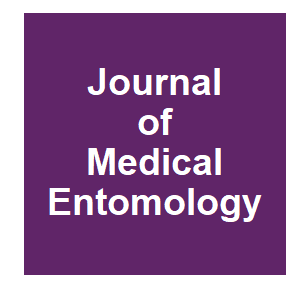
|
When More is Less: Mosquito Population Suppression Using Sterile, Incompatible and Genetically Modified Male MosquitoesS. L. Dobson, Journal of Medical Entomology, 58:1980-1986. 2021.
The current review of the Sterile Insect Technique (SIT) is motivated by new technologies and the recent renaissance of male release field trials, which is driving an evolution in mosquito control and regulation. Practitioners that are releasing male mosquitoes would do well to ... Keywords: cockroach, IIT, Incompatibility Insect Technique, wolbachia |

|
Number of Project Wolbachia mosquitoes released is constantly reviewed to maintain suppression of dengue: NEAN. L. Ching, today, 2021.
Project Wolbachia – Singapore has yielded promising results so far.Releases of non-biting male Wolbachia-Aedes mosquitoes have suppressed the urban Aedes aegypti mosquito populations in study sites at Tampines and Yishun by up to 90 per cent, and we have observed 58 to 74 per ... Keywords: cockroach, IIT, Incompatibility Insect Technique, wolbachia |

|
Genetic Biocontrol WebinarsDavid O'Brochta and Hector Quemada, GeneConvene Global Collaborative, 2021.
In the mid 20th century various ideas emerged concerning how genetics and genetic principles could be directly applied to age-old problems of managing insects that threaten food security and public health. This series of webinars will explore the current state-of-the-art of ... Keywords: cockroach, IIT, Incompatibility Insect Technique, wolbachia |

|
GeneConvene Webinar Series on: Genetic BiocontrolDavid O'Brochta and Hector Quemada, , 2021.
In the mid 20th century various ideas emerged concerning how genetics and genetic principles could be directly applied to age-old problems of managing insects that threaten food security and public health. This series of webinars will explore the current state-of-the-art of what ... Keywords: cockroach, IIT, Incompatibility Insect Technique, wolbachia |

|
A patent review on strategies for biological control of mosquito vectorK. Parihar, M. Telang and A. Ovhal, World Journal of Microbiology and Biotechnology, 36:23. 2020.
This paper presents a comprehensive technology overview of patent documents disclosing biological agents for mosquito control. The patent analysis revealed that comparable number of patent documents were filed in two technology categories: non-recombinant agents and genetically ... Keywords: cockroach, IIT, Incompatibility Insect Technique, wolbachia |

|
Microbiome Innovation in Agriculture: Development of Microbial Based Tools for Insect Pest ManagementM. Qadri, S. Short, K. Gast, J. Hernandez and A. C.-N. Wong, Frontiers in Sustainable Food Systems, 4. 2020.
This review emphasizes the potential and use of microbes in sustainable insect pest management. We first review the diverse insect traits shaped by insect-microbe associations that span nutrition, immunity, ecological interactions with natural enemy, insecticide resistance, and ... Keywords: cockroach, IIT, Incompatibility Insect Technique, wolbachia |

|
Genetic Biocontrol – An OverviewGeneConvene Global Collaborative,, GeneConvene Global Collaborative, 2020.
This video explains what genetic biocontrol is and surveys various technologies that can be consider genetic biocontrol technologies. It offers a conceptual organization of the various technologies based on the potential of genetic biocontrol organisms to persist and spread in ... Keywords: cockroach, IIT, Incompatibility Insect Technique, wolbachia |

|
Can we kill the dreaded mosquito? Do we even want to?Stacey McKenna, Sierra, 2020.
As a major vector for disease, the mosquito has harmed more human beings than just about any other animal, and a changing climate is only boosting those numbers. As the range of disease-carrying species of mosquitoes expands, so does their ability to transmit the parasites and ... Keywords: cockroach, IIT, Incompatibility Insect Technique, wolbachia |

|
Efficient production of male Wolbachia-infected Aedes aegypti mosquitoes enables large-scale suppression of wild populationsJ. E. Crawford, D. W. Clarke, V. Criswell, M. Desnoyer, D. Cornel, B. Deegan, K. Gong, K. C. Hopkins, P. Howell, et al., Nature Biotechnology, 38:482-492. 2020.
The range of the mosquito Aedes aegypti continues to expand, putting more than two billion people at risk of arboviral infection. The sterile insect technique (SIT) has been used to successfully combat agricultural pests at large scale, but not mosquitoes, mainly because of ... Keywords: cockroach, IIT, Incompatibility Insect Technique, wolbachia |

|
The value of existing regulatory frameworks for the environmental risk assessment of agricultural pest control using gene driveJ. Romeis, J. Collatz, D. C. M. Glandorf and M. B. Bonsall, Environmental Science & Policy, 108:19-36. 2020.
The application of (synthetic) gene drives is a powerful tool to control populations of insects that are agricultural pests, vectors of diseases, or a threat to biodiversity potentially leading to the local or global eradication of a species. The potential use of gene drive ... Keywords: cockroach, IIT, Incompatibility Insect Technique, wolbachia |

|
SCIENTIFIC OPINION: In response to the referral of 12 October 2015 concerning use of genetically modified mosquitoes for vector controlHigh Council for Biotechnology, High Council for Biotechnology (France), 2017.
The Scientific Committee’s opinion describes emerging vector control techniques using GM mosquitoes, the current state of research into and development of these techniques and the outcomes of initial experiments worldwide. To date, only one technique has been developed to an ... Keywords: cockroach, IIT, Incompatibility Insect Technique, wolbachia |

Contact
David O’Brochta
Foundation for the
National Institutes of Health
geneconvenevi@fnih.org
RSS

